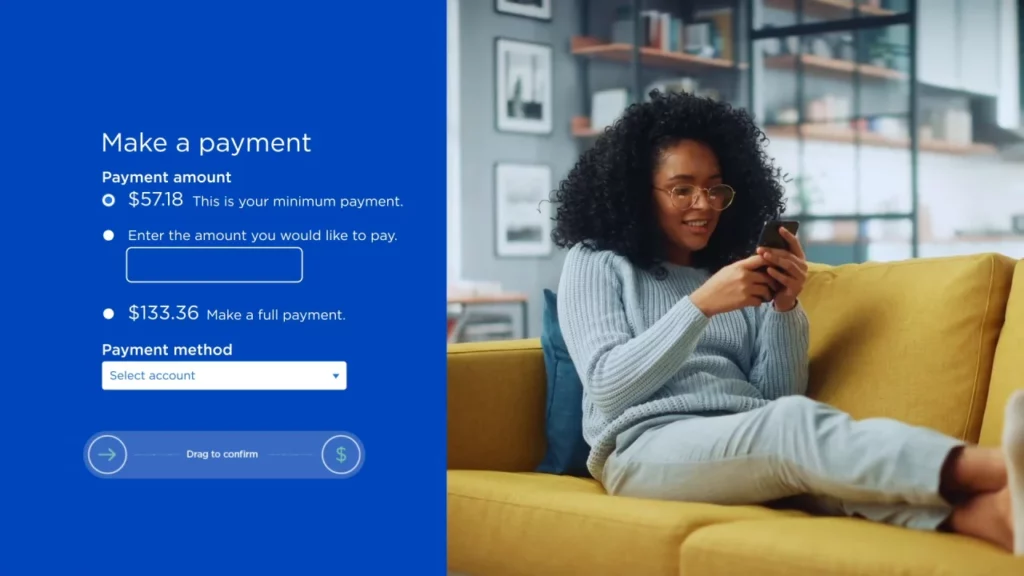Top 10 Best Customer Engagement Platforms for 2024

Having an exceptional service or product might be enough to lure customers in. However, there’s no guarantee that they will continue to find value in your offering or stay engaged with your brand.
Unengaged customers are quick to jump to the next best offer - likely a competitor you’re trying to beat. On the other hand, 64% of customers who are part of a loyalty program will purchase more frequently from that brand, and 31% of those will even pay a higher price to stay loyal.
Customer engagement isn’t just great for retention - it also presents a unique opportunity to boost revenue. But if you want to improve communications at scale without losing sight of your customers’ needs, you need an automated customer engagement platform.
What are customer engagement platforms?
Customer engagement platforms are software tools that automate and track customer interactions across channels. There are various types of customer engagement platforms, some covering a broader range of activities while others are specifically designed for a single marketing activity (think interactive videos or personalized emails).
However, they all enable companies to tailor their messaging at scale based on customers' previous actions and preferences. Companies can also set up and automate a continuous flow of communications based on specific triggers.
Consider a customer who visits your site but doesn’t make any purchases. With a customer engagement platform, you can set up a trigger so that this customer receives a follow-up email reminding them to complete their purchase or offering a special discount. This personalized communication keeps your customers engaged with your brand and helps them feel special and appreciated, ultimately leading to higher loyalty and retention.
Regular and tailored interactions are particularly crucial in B2C. Because B2C customers often make impulse-led purchase decisions, it is essential to keep your brand top-of-mind so that they will instantly choose you over your competition when they are ready to buy.
Types of Customer Engagement Platforms
While there are different customer engagement platforms, these solutions overlap in features and use cases. It’s crucial to understand each category in detail and ensure you have the right tech stack to cover every aspect of your customer engagement plan.
Customer relationship management (CRM)
Customer relationship management (CRM) platforms help you optimize and automate customer interactions, such as marketing emails and in-app notifications. You can also create complex workflows based on specific triggers, build unique customer lists, and optimize lead gen landing pages and CTAs.
Customer data platform (CDP)
Customer data platforms (CDP) focus on data aggregation and segmentation. They track every customer touchpoint from multiple sources, collate this data, and use it to develop customer profiles. Marketing and sales teams primarily use CDP platforms to analyze customer personas, behavior, and trends.
Customer experience platforms (CXP)
Customer experience platforms (CXP) allow businesses to optimize the customer journey. Unlike CRMs and CDPs, CXPs provide a more holistic view of customer experiences across channels and touchpoints.
Benefits of Customer Engagement Platforms
- Time and money savings—By automating CRM tasks like sending newsletter emails or following up with customers, these platforms enable marketing teams to streamline communications and ensure consistency in customer interactions for a fraction of the time and operational costs.
- Higher personalization levels—Customer engagement platforms enable personalization at scale, which would be impossible to do manually. For example, e-commerce platforms can send personalized product recommendations based on a customer’s previous purchases or browsing history.
- Increased visibility—These platforms help you understand customer journeys by giving you a unified view of each customer's action, from commenting on a social post to opening your email or clicking on a website link.
- Better segmentation and targeting—You can create detailed customer segments based on demographics, behavioral patterns, or purchase history. Detailed and accurate segmentation supports higher personalization, improving engagement and satisfaction.

Key Features to Look For in a Customer Engagement Platform
1. Cross-channel Tracking
The more comprehensive your platform’s coverage is, the better. Ensure that your platform covers a variety of channels, from your website to social media channels and mobile apps, so that you can obtain more accurate customer behavior data.
2. Easy of Use
Customer engagement encompasses various business areas, from sales to marketing, product, or customer service. Therefore, it’s vital that your platform is user-friendly and offers intuitive navigation to ensure that even teammates who don’t use the tool daily can perform basic tasks without extensive training. The platform should also have a comprehensive knowledge center with demo videos for quick answers.
3. Unified View
Customer journeys are complex enough as they are. You need a tool that collates all customer data across different channels into a unified dashboard that is easy to navigate, helping your team find information fast and activate the proper communication workflows.
4. Integrations with Existing Software
Ensure that your customer experience platform seamlessly integrates with other essential software your team uses, such as WordPress, Google Analytics, loyalty rewards apps, customer messaging, or survey tools.
Top 10 Customer Engagement Platforms
1. Airship
Airship focuses on mobile-centric engagement, helping enterprises create personalized SMS, push notifications, and in-app messaging for instant communications. Though most known for its mobile app support, Airship also provides email automation and customer segmentation capabilities, enabling companies to communicate with customers at the right time through various channels.
Best for: Companies seeking to improve engagement on mobile channels.
Pricing: You can sign up for the basic tier for free or request a quote for more premium tiers.
2. Blings
Although not directly a customer engagement platform, Blings enables teams to improve customer engagement through personalized video marketing. Thanks to its patented MP5 technology, Blings can personalize your videos in real-time as your customer data changes. This tool integrates seamlessly with the most popular CRM platforms, so any data in your CRM can be automatically transferred into your videos.
You can easily incorporate interactive elements to your videos, such as buttons and quizzes, or quickly update them to reflect a new event (think a special promotion or anniversary celebration). The videos are lightweight and infinitely scalable so you can easily distribute them across any channel. Real-time analytics enable you to monitor engagement, conversions, and ROI in a unified view.
Best for: Companies looking to invest in video marketing for improved customer experiences. Blings are especially great for large-scale loyalty or lead-generation activities.
Pricing: Available upon request.
3. Salesforce Experience Cloud
Salesforce Experience Cloud offers tools to empower businesses to create connected customer experiences. Its key capabilities include tailored content delivery, AI-driven recommendations on customer journeys, and the creation of customer communities and portals. These exclusive branded spaces allow customers to interact, share information, or access support. Experience Cloud also seamlessly integrates with Salesforce CRM for easy data management.
Best for: Organizations already leveraging Salesforce CRM as their primary CRM tool.
Pricing: The Complex pricing structure starts at $2 per login or $5 per monthly member.
4. Zoho CRM Plus
Naming itself “the customer experience command center,” Zoho CRM Plus is an all-around customer engagement tool that streamlines marketing, sales, and customer service efforts. It allows teams to track customer interactions across multiple channels, including email, social media, phone, surveys, and live chats. It also leverages advanced analytics and AI-driven insights to recommend personalized engagement strategies.
Best for: Companies looking to streamline cross-team efforts.
Pricing: £55 per user per month (or £47 if billed annually).
5. Twilio Engage
Twilio Engage creates and manages personalized communications across SMS, email, voice, and messaging apps. With its robust API infrastructure, businesses can craft highly customized customer journeys, automate interactions, and deliver messages at scale. The platform’s flexibility and extensive integrations make it ideal for developers and businesses building bespoke engagement solutions.
Best for: Developers looking to create custom customer engagement solutions.
Pricing: Available upon request.
6. Kangaroo
Kangaroo lets you set up automated email drips for three triggers: events (like birthdays or contest participation), purchases, and other customer behaviors (think sharing a post on social media or responding to a survey). It also offers a range of solutions to incentivize customer loyalty, including a white-label loyalty app that companies can customize.
Best for: Companies looking to start a rewards program or improve their rewards and loyalty promotions.
Pricing: The basic package starts at $59 per month.
7. HubSpot
HubSpot’s Customer Platform is an all-in-one CRM with robust customer engagement features designed to help businesses attract, engage, and delight customers. It offers tools for email marketing, social media management, live chat, and automated workflows, all integrated within its CRM. HubSpot’s focus on inbound marketing allows businesses to create meaningful, personalized interactions that guide customers through every stage of their journey.
Best for: Businesses looking for a unified CRM and customer engagement solution.
Pricing: You can get started for free or get in touch for pricing details.
8. Zendesk
Zendesk is a customer service and support platform that enables businesses to manage customer interactions more efficiently. It offers a unified interface for tracking support tickets, directing tickets to the most suitable agent, and developing a comprehensive knowledge base to improve self-service customer support.
Best for: Customer service teams looking to streamline processes.
Pricing: Starts at $55 per month.
9. Pendo
Pendo is a product engagement platform that offers advanced usage analytics and feedback collection. In addition to data gathering and AI-based recommendations, it enables you to test new ideas before the build stage and create a clear roadmap for every new product feature. It also offers its own Pendo AI, which suggests ideas for engagement and workflow optimization and adapts the tone of your content based on different customer segments.
Best for: Product teams looking to gain more insight into user feedback.
Pricing: Available upon request.
10. Qualtrics
Qualtrics’ customer experience tooling includes real-time user feedback capture, AI-based data analytics and insights, and tools for conducting surveys and measuring customer satisfaction (CSAT). Qualtrics also offers an employee-focused platform that enables efficient employee onboarding and engagement.
Best for: Teams looking to analyze user feedback and measure customer satisfaction.
Pricing: Available upon request.
Maximize Engagement With Dynamic Video Content
Great products don’t equate to lifelong success, but great customer engagement does. Customer engagement platforms are essential to maintaining a consistent flow of interactions with your customers and improving the frequency and quality of the content you share.
But before you choose a customer engagement platform, you should know which marketing channels and content formats will give you the best ROI. In 2024, video marketing remains king.
If you want to enhance your video marketing efforts, Blings is your go-to platform. Leveraging their uniqueMP5 technology, Blings enables you to add personalized messages to your videos based on real-time CRM data and optimize videos at scale. You can easily edit and improve videos manually or enable AI optimization so the video displays different messaging based on how your customers behave. Schedule a demo to experience the Blings platform, giving you visibility over video performance and customization in one place.
















